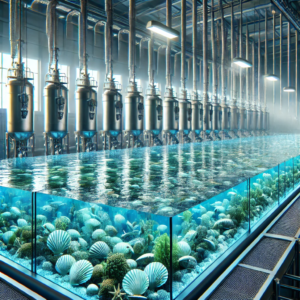 Ozone in Aquaculture – An Advanced Solution for Water Quality Improvement and Disease Prevention
Ozone in Aquaculture – An Advanced Solution for Water Quality Improvement and Disease Prevention
Aquaculture is becoming an increasingly vital part of sustainable food production, yet it faces numerous challenges. The cultivation of fish and other aquatic organisms requires high-quality water to ensure their health and optimal growth conditions. However, intensive farming can lead to water pollution, disease outbreaks, and environmental imbalances.
Water quality is a key factor in aquaculture success, influencing oxygen levels, the formation of toxic compounds, and pathogen spread. To achieve effective disinfection and water purification, ozone oxidation is widely used. Ozone eliminates bacteria, viruses, fungi, and other microorganisms while also helping to remove organic pollutants, nitrites, odors, and coloration.
Ozone oxidation is particularly beneficial in Recirculating Aquaculture Systems (RAS), where water is continuously recycled. Using ozone reduces dissolved organic matter, improves oxygen levels, and decreases the concentration of harmful compounds such as 2-MIB and geosmin. This helps create optimal conditions for fish growth and lowers mortality rates.
Additionally, ozone plays a crucial role in live fish transport by maintaining hygienic conditions in well boats, disinfecting water intake and discharge systems, and reducing disease transmission risks. This method is also widely applied in shellfish depuration and large-scale aquarium maintenance.
Ozone oxidation is a sustainable and environmentally friendly technology that minimizes the need for chemical treatments while ensuring a healthy aquatic ecosystem. It not only reduces water pollution but also optimizes aquaculture farm operations, leading to greater productivity and lower operational costs.